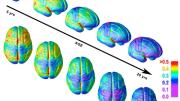Antimicrobial resistance (AMR) is one of the most significant global health threats of the twenty-first century. In the U.S. alone, more than 2.8 million antimicrobial-resistant infections occur each year, according to the Centers for Disease Control and Prevention (CDC). Beyond the risks to individuals who contract antibiotic-resistant infections, AMR represents a public health emergency with significant economic and social ramifications, said experts who gathered at the 2025 World Medical Innovation Forum in Boston last week.
Antimicrobial resistance is a natural process, emphasized panelist Robin Patel, the director of the Infectious Diseases Research Laboratory at the Mayo Clinic. Microbes will mutate to adapt to their environment. Some natural mutations help microbes survive exposure to antibiotics. Over time, the selective pressure from antibiotic use and overuse allows these resistant microbes to thrive. As a result, infections from bacteria, viruses, fungi, and parasites that were once treatable can become less responsive to or even unaffected by the drugs designed to kill or inhibit them. “In the medical establishment,” Patel said, “we should have expected we would end up at this place.”
What Is Antimicrobial Resistance?
AMR can be categorized into two main types, according to Osler professor of ophthalmology Michael Gilmore, who moderated the conversation: mutational resistance, exemplified by tuberculosis (TB), and acquired resistance, which is common in other organisms, such as Staphylococcus species. TB remains a major global AMR concern, said Gilmore (read more in “The Future of Tuberculosis” and “A Plague Reborn”). Drug-resistant TB is estimated to cause 13 percent of all antimicrobial resistance-attributable deaths worldwide, according to a National Institutes of Health (NIH) study published in 2024.
Mutational AMR develops through spontaneous genetic changes within a microbe’s own DNA, allowing it to survive antimicrobial treatment and gradually become resistant. In contrast, acquired AMR happens when microbes obtain resistance genes from other microbes through horizontal gene transfer, a process by which genetic material can be translated “sideways” between different microbes, even across species. This means that if one microbe (a bacterium, for example) has a gene that makes it resistant to an antibiotic, it can pass that gene to other bacteria nearby, rapidly spreading resistance far more quickly than by mutation alone.
In countries like the United States, said Gilmore, “AMR is commonly a problem among hospitalized patients,” localized to clinical settings where infections are frequently brought in by new patients, contact spreads these infections, and wounds and vulnerable tissue allow them to develop—hijacking already weak or compromised immune systems. Supporting this, a July 2024 CDC report showed that six antimicrobial-resistant, hospital-onset bacterial infections increased by a combined 20 percent during the COVID-19 pandemic compared to the pre-pandemic period. However, a 2025 study published in JAMA Network Open analyzed over 7.16 million microbial cultures collected between 2012 and 2022 to examine the epidemiology of AMR infections. The study found that the majority (77 percent) of drug-resistant infections originated in the community, while only 23 percent were classified as hospital-onset, occurring after day four of admission. Tackling resistance, then, requires a focus on both hospital settings and beyond.
Indeed, associate professor of medicine Erica Shenoy, who leads infection control at Mass General Brigham, says the problem of AMR transmission in healthcare settings is broader than hospitals alone. “We tend to think about the hospital, but if we really look at where healthcare is delivered right now, it’s a whole spectrum,” she said, pointing to urgent care and post-acute facilities as well as hospital-at-home delivery. To address the spread of resistant organisms, she outlined a threefold approach, focused on detection, design, and health provider choices.
First, she emphasized the need for better diagnostic tools—specifically those geared toward surveillance and early detection of potential outbreaks, not just treatment. Targeted testing could be improved through predictive algorithms that use electronic health record data to identify high-risk individuals. “Even though AMR is a very big problem,” she said, “it is concentrated in individuals with particular risk factors.” Using health records to identify these individuals could help reduce risk.
Second, Shenoy pointed to the physical infrastructure of healthcare itself, including medical devices and facility design. “The design of everything we do in healthcare,” she said, “from the facilities to the devices we use in patients, matters.” While there is a push toward reusable devices for sustainability, she raised concern over their potential for true and complete sanitation: “When I hear reusable, I think, where’s the risk to the patient? Is this something that can be cleaned, disinfected, or sterilized?”
Finally, Shenoy argued that human behavior and “system complexity” are critical and under-addressed elements in AMR transmission. “Big picture is the human factors,” she said, including the choices “around the use, or non-use, of antibiotics.” With healthcare growing increasingly complex, “cognitive overload” among clinicians can lead to breakdowns in infection control. In her view, how caregivers and patients interact with healthcare environments may be just as important as the presence of resistant pathogens.
The Broken Antibiotic Market
At the heart of the crisis lies a troubling paradox: there is an urgent need for new antibiotics, but the economic model that governs drug development discourages their creation.
Kevin Krause, the president and CEO of ArrePath, a biotech company that develops anti-infectives to address antimicrobial resistance, outlined the multiple failures of the current antibiotic market. During the past two decades, the development and commercialization of new antibiotics have significantly declined. By the middle of the 2000s, multiple obstacles had emerged.
- Scientific and regulatory barriers: Clinical trials are expensive and difficult to run due to evolving regulatory standards and rising expectations for how data should be shared with pharmaceutical companies and marketed to the public.
- Weak economic incentives: Antibiotics are used for short durations and often reserved for emergencies. As a result, their market potential is limited.
- Manufacturing challenges: Antibiotic production is technically complex and costly. Few facilities specialize in it, and the expected revenue often does not justify investment in new manufacturing capacity.
- Investment drought: Venture capitalists anticipate limited financial gains. Even when companies succeed in gaining regulatory approval for new drugs, the commercial returns are so low that many go bankrupt shortly after launch.
This dynamic has created a dangerous pattern. New antibiotics are developed, used sparingly to prevent a rise in resistance (a practice known as “stewardship”), and then fail commercially due to their limited use and little resulting revenue. In many cases, newly approved antibiotics are intentionally reserved for the most drug-resistant infections, meaning they may sit unused for years despite their clinical value. While this approach is essential for protecting public health, it severely limits the market potential of new drugs, making it nearly impossible for companies to earn back their investment, even when their product works exactly as intended. The result is what Krause called, bluntly, a “broken market.”
And, he added, “The optics of giving a billion-dollar check to a company when they bring a drug to market are difficult to manage.” Without economic models that reward innovation and account for stewardship, meaningful progress is impossible.
Krause suggested more creative funding solutions, such as the “double bottom line” model: profitable areas like oncology could reinvest revenue into antibiotic research and development. “You might see an oncology-focused company have a dedication to AMR, and not expecting to make profit, but rather reinvesting some of that revenue,” he proposed. An oncology-focused company might do this without expectation of direct return, but because reinvestment aligns with their core mission (cancer patients are particularly vulnerable to infections due to immunosuppression, making effective antibiotics critical to their care). Moreover, engaging in AMR solutions enhances corporate reputation, attracts “mission-driven” talent, and opens opportunities for collaboration with governments and global health organizations.
Clinical Innovation for Antimicrobial Resistance
Despite the enormity of the problem, the panelists stressed that AMR is not an insurmountable challenge. In fact, some solutions are already emerging.
- Pull incentives: Krause emphasized models such as the United Kingdom’s subscription-based payments, where companies are paid for access to antibiotics regardless of how much is used. This detaches revenue from volume, thus encouraging developers to bring new products to market. He cautioned that these incentives are only part of the solution: “That might get you back to baseline, but that doesn’t represent profit.”
- R&D partnerships: Public-private partnerships are crucial. “I always like to point to Operation Warp Speed during COVID-19 as an example,” Krause said. “When we have a serious problem, public-private partnerships can fix anything.” While Warp Speed is not the standard for clinical trials and federal approval, it does represent an example of academia, government, and industry working together to solve an urgent problem.
- Artificial intelligence: Patel pointed to the promise of AI in analyzing electronic health records by identifying patterns of resistance, predicting outbreaks, and guiding clinical decisions. Krause emphasized that AI is helping his company develop antibiotics with “completely novel chemistry” that target bacterial mechanisms that “haven’t been exploited for clinical use previously.”
- Stewardship programs and education: Hospitals should embed stewardship practices into routine care. But that must be coupled with education for both clinicians and patients about when antibiotics are, and are not, appropriate.
While the discussion focused largely on U.S. policy and innovation, the panelists emphasized that AMR is a global crisis. “We want people to be able to travel,” said Shenoy. “But when people come back or move between areas…there is a real threat.” After all, microbes don’t respect international borders.
How the challenge of antimicrobial resistance is met will reshape the future of care, the group agreed. “This is a solvable problem,” said Shenoy. “But it needs urgency, coordination, and sustained investment across sectors.” The solution will likely require a shift in how healthcare professionals and patients value antibiotics: not as expendable panaceas, but as critical and targeted infrastructure to protect the well-being of individuals and populations.








